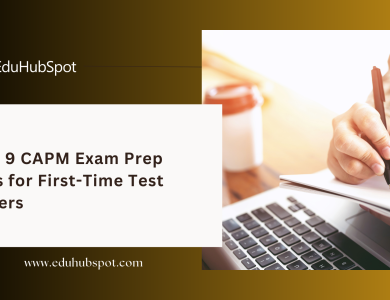In the rapidly evolving landscape of education, the role of professional development for teachers has undergone a profound transformation. With the integration of digital technologies into classrooms, educators find themselves navigating a dynamic and ever-changing landscape of opportunities. This article explores the latest trends in teacher professional development within the digital age, shedding light on the impact of technology on continuous learning for educators.
The Evolution of Professional Development
Historically, professional development for teachers often involved in-person workshops, seminars, and conferences. While these avenues continue to be valuable, the digital age has ushered in a new era of professional development that transcends geographical constraints and embraces the power of technology.
Digital Learning Platforms: One of the prominent trends in teacher professional development is the rise of digital learning platforms. These platforms offer educators the flexibility to engage in professional development at their own pace and on their own schedule. Websites like Coursera, edX, and Khan Academy provide a plethora of courses covering diverse topics, from pedagogy and classroom management to the integration of technology in education.
Webinars and Virtual Workshops: Webinars and virtual workshops have become staples in the realm of online professional development. Platforms like Zoom and Microsoft Teams facilitate real-time interactions, allowing educators to participate in workshops led by experts from around the world. This trend not only fosters collaboration but also addresses the time constraints often faced by teachers.
Microlearning Modules: Recognizing the busy schedules of educators, microlearning has emerged as an effective trend in professional development. Microlearning involves delivering content in short, focused bursts, making it easier for teachers to consume information in smaller, manageable chunks. Apps and platforms that offer bite-sized lessons cater to the time constraints of educators, allowing them to engage in continuous learning without overwhelming their schedules.
Social Media as a Catalyst for Professional Growth
In the digital age, social media has transcended its role as a mere communication tool; it has become a dynamic space for professional growth and development among teachers. Platforms like Twitter, LinkedIn, and Facebook have evolved into thriving communities where educators can connect, collaborate, and share insights.
Twitter Chats and Hashtags: Educational Twitter chats have gained immense popularity as a means of professional development. Teachers from around the world participate in discussions using specific hashtags, such as #EdChat or #TeacherPD. These real-time conversations allow educators to exchange ideas, seek advice, and stay updated on the latest trends in education.
LinkedIn Professional Learning Groups: LinkedIn has transformed into a professional learning hub for educators. Joining relevant groups and networks on LinkedIn provides teachers with a space to share resources, engage in discussions, and establish connections with professionals in their field. The platform’s professional orientation makes it an ideal space for career-focused professional development.
Facebook Communities for Teachers: Dedicated Facebook communities have emerged as vibrant spaces for teacher collaboration. Groups focused on specific subjects, grade levels, or teaching methodologies facilitate resource sharing, problem-solving, and mutual support. These communities create a sense of camaraderie among educators, fostering a collaborative spirit in the digital realm.
Personalized Learning Paths
In the digital age, the one-size-fits-all approach to professional development is making way for personalized learning paths tailored to individual educators’ needs and interests. Technology enables teachers to choose professional development opportunities that align with their specific goals, teaching styles, and subject areas.
Data-Driven Insights: Data analytics tools are being increasingly integrated into professional development platforms. These tools provide educators with insights into their strengths, areas for improvement, and preferences in learning. By leveraging data-driven insights, teachers can create personalized learning plans that cater to their unique professional development needs.
AI-Powered Recommendations: Artificial intelligence (AI) is playing a pivotal role in recommending personalized learning resources for educators. As teachers engage with online courses, webinars, and other digital content, AI algorithms analyze their preferences and recommend additional resources that align with their interests and goals. This personalized approach enhances the relevance and effectiveness of professional development.
Gamification and Interactive Learning
To make professional development engaging and enjoyable, gamification and interactive learning elements are gaining prominence. These strategies leverage the principles of game design to enhance motivation, participation, and the overall learning experience for educators.
Badges and Certifications: Many online professional development platforms use gamification elements such as badges and certifications. Teachers earn badges for completing courses or acquiring specific skills, providing a tangible representation of their achievements. This not only motivates educators but also adds a sense of accomplishment to the learning process.
Interactive Modules and Simulations: Interactive learning modules and simulations are designed to simulate real-world teaching scenarios. Educators can engage in virtual classrooms, make decisions, and observe the outcomes, allowing for hands-on, experiential learning. This interactive approach enhances the transferability of skills from professional development settings to the actual classroom environment.
Challenges and Considerations in the Digital Age
While the digital age brings forth numerous opportunities for teacher professional development, it also presents challenges that educators and educational institutions must address.
Digital Literacy and Accessibility: Ensuring that educators possess the necessary digital literacy skills is crucial for effective participation in online professional development. Institutions must provide support and training to enhance educators’ digital proficiency and ensure accessibility for all teachers, regardless of their technological backgrounds.
Balancing Technology Integration: While technology is a powerful tool for professional development, striking the right balance is essential. Overreliance on digital platforms may lead to a lack of face-to-face interactions and a potential disconnect from the practical aspects of teaching. A holistic approach that combines digital and traditional methods is key.
Privacy and Security Concerns: The digital landscape raises concerns about privacy and security. Educational institutions must prioritize the protection of sensitive data, ensuring that teachers’ personal information and professional development records are secure. Establishing robust cybersecurity measures is paramount in the digital age.
Looking Ahead: Navigating the Future of Teacher Professional Development
As we navigate the future of teacher professional development in the digital age, it is clear that a multifaceted approach is essential. The trends discussed—digital learning platforms, social media engagement, personalized learning paths, and gamification—illustrate the diverse avenues available to educators for continuous growth.
In this digital era, the focus is not merely on acquiring new skills but also on fostering a mindset of adaptability and lifelong learning. Professional development is no longer a periodic event but an ongoing journey, and the digital age provides the tools and platforms to make this journey more enriching, collaborative, and tailored to individual needs.
Educators, institutions, and edtech developers must collaborate to harness the full potential of these trends. By addressing challenges, promoting digital literacy, and embracing the opportunities presented by the digital age, we can create a future where teacher professional development is not just a requirement but a vibrant and integral aspect of a teacher’s professional identity




